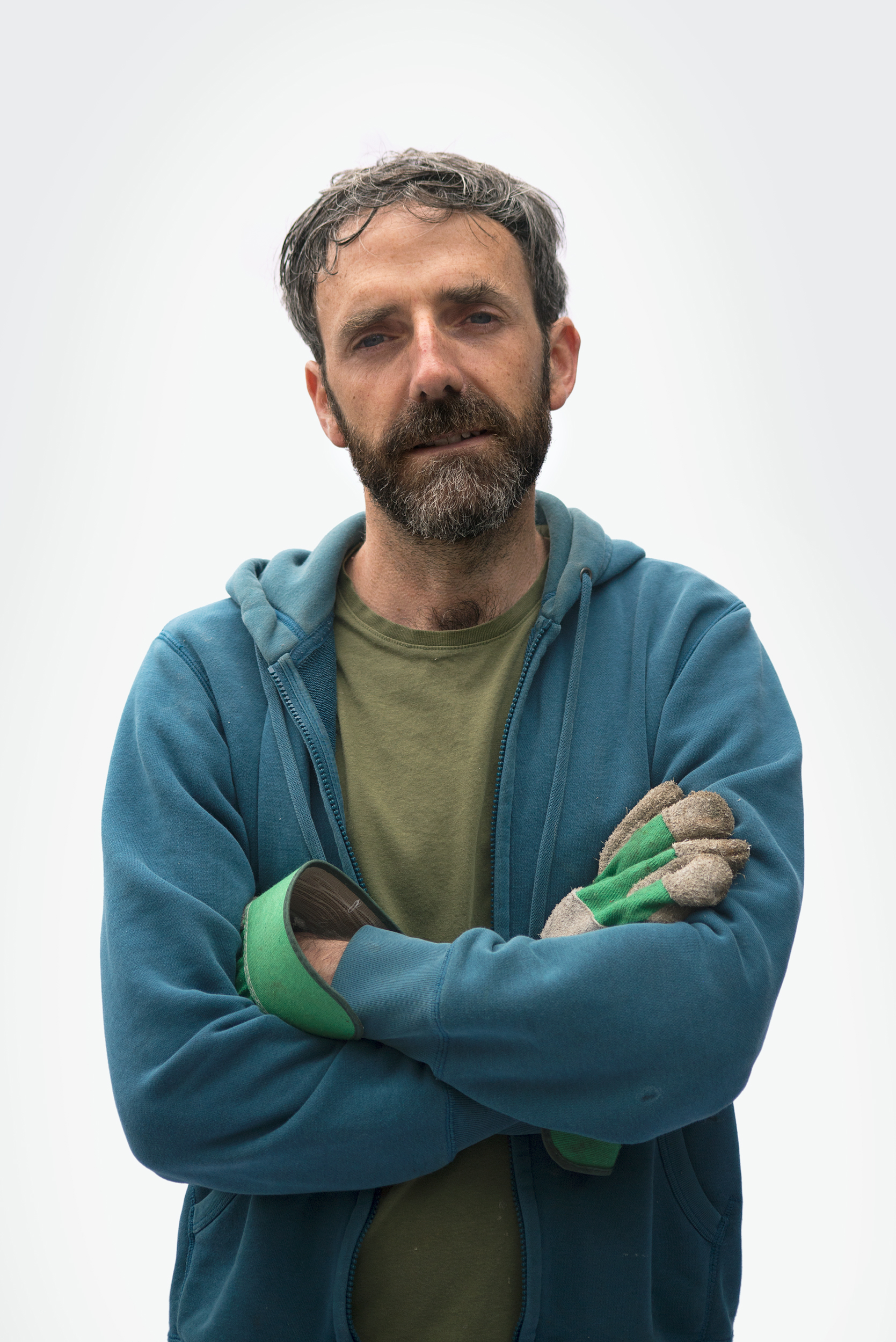
Richard
The Artist Horticulturalist
London — UK
Summer, 2017
Richard Gaplin works at the intersection between art and nature. Combining his background in fine art with a horticultural practice based in the heart of London, he hopes to add more depth and meaning to the act of planting things in the ground.
The practice of horticulture involves working with nature to create more beautiful surroundings. But for Richard this process isn’t just about healthy plants or the fruit they bare. It’s about the building of self-sustaining eco-systems as well. Richard believes the lasting regeneration and enhancement of the urban landscape is only possible by directly engaging communities actively in the process of growing.
By involving people with their own local history, as well as their existing wildlife ecology, Richard aims to create richer and more resilient bio-diverse environments for people to live within. Richard has an interest in systems, structures, the urban environment, and a seemingly uncanny knack with making things grow.
“Previously I spent many years producing artwork in my studio as a very solitary practice. My work had been engaged with cities and the transformation of cities, but very much as an observer, a bystander. I guess now I’m trying to make actual change.”
The Artist Horticulturalist
London — UK
Summer, 2017
—
Richard Gaplin works at the intersection between art and nature. Combining his background in fine art with a horticultural practice based in the heart of London, he hopes to add more depth and meaning to the act of planting things in the ground.
The practice of horticulture involves working with nature to create more beautiful surroundings. But for Richard this process isn’t just about healthy plants or the fruit they bare. It’s about the building of self-sustaining eco-systems as well. Richard believes the lasting regeneration and enhancement of the urban landscape is only possible by directly engaging communities actively in the process of growing.
By involving people with their own local history, as well as their existing wildlife ecology, Richard aims to create richer and more resilient bio-diverse environments for people to live within. Richard has an interest in systems, structures, the urban environment, and a seemingly uncanny knack with making things grow.
“Previously I spent many years producing artwork in my studio as a very solitary practice. My work had been engaged with cities and the transformation of cities, but very much as an observer, a bystander. I guess now I’m trying to make actual change.”
“My work had been engaged with cities and the transformation of cities, but very much as an observer, a bystander. I guess now I’m trying to make actual change.”
Getting roots in the ground feels pretty important to Richard. Yet this first step is just the start of a much wider, and more long-term vision.
“I’m not a fan of short term quick-fix or ‘meanwhile’ uses. And I’m suspicious about the co-opting of greening strategies by developers. Getting trees in the ground feels different. Symbolically as well as practically.”
“I’m not a fan of short term quick-fix or ‘meanwhile’ uses. And I’m suspicious about the co-opting of greening strategies by developers. Getting trees in the ground feels different. Symbolically as well as practically.”
Richard offers us an alternative to the overused ‘sustainability’ angle with the word “Rootedness” - “Incorporating a sense of longevity, connectedness to the soil, and a sense of place”.
This relates at all levels to what he chooses to plant. Everything is chosen with longevity and resilience in mind, with a view to creating rich urban eco-systems which can eventually begin to look after themselves. “Planting annual vegetables is so relentless. The annual cycle begins again every year. I’m interested in longer time spans, and planting something that it is harder to get rid of once established!”
This relates at all levels to what he chooses to plant. Everything is chosen with longevity and resilience in mind, with a view to creating rich urban eco-systems which can eventually begin to look after themselves. “Planting annual vegetables is so relentless. The annual cycle begins again every year. I’m interested in longer time spans, and planting something that it is harder to get rid of once established!”
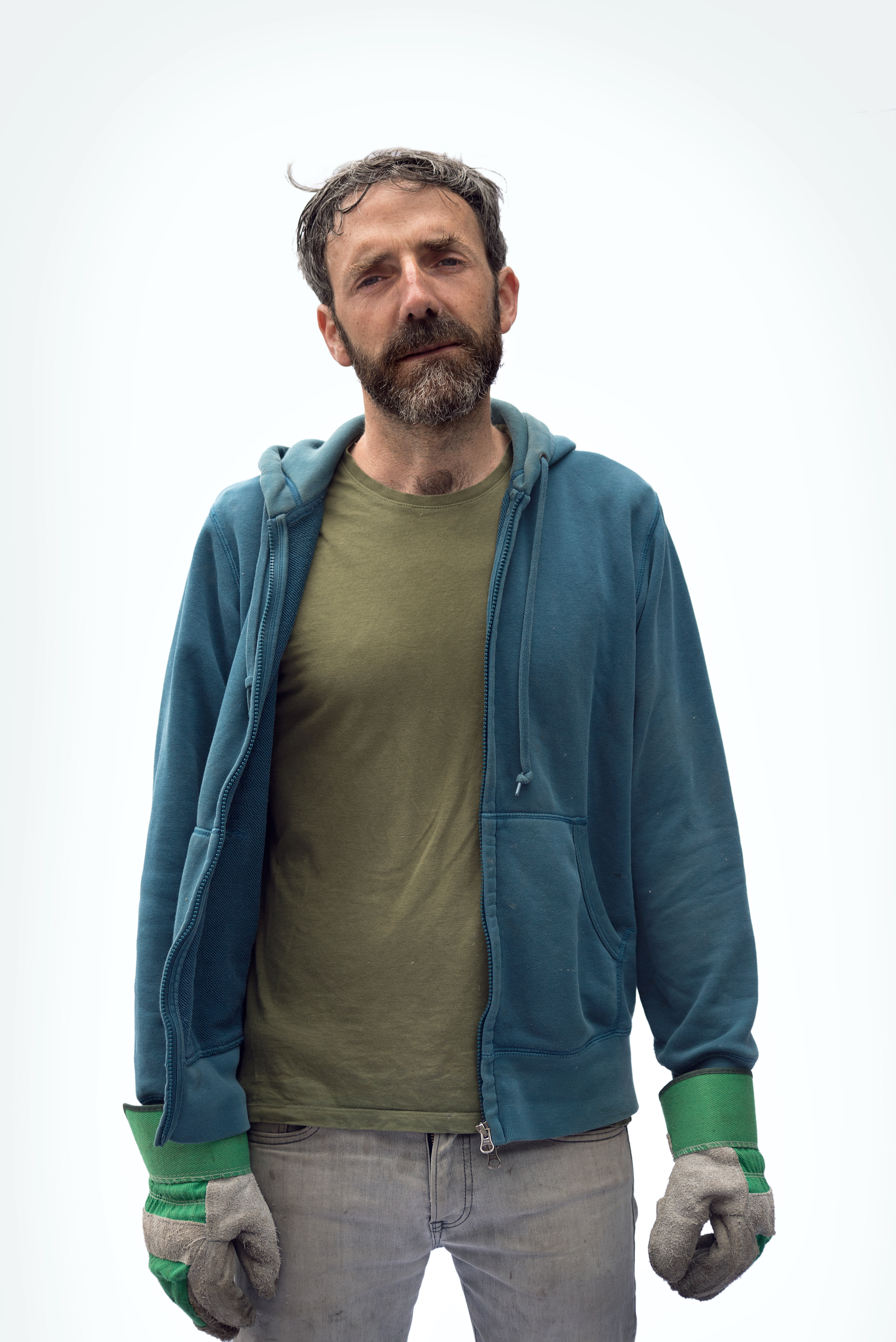
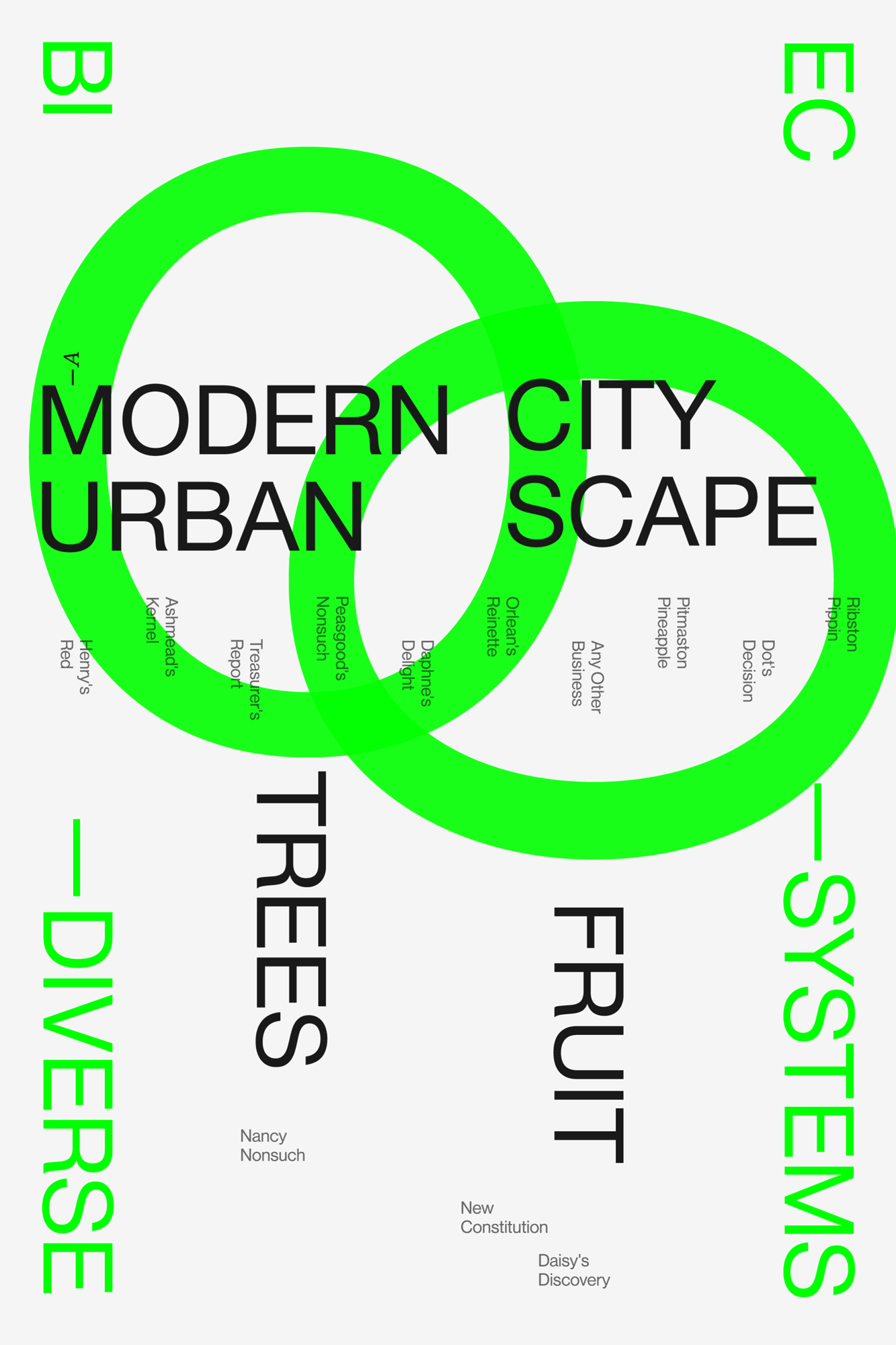
— Do you see much of a line between art and urban planting and growing?
“I don’t know where the line is. It’s a spectrum. Some of my projects feel to me more like art projects. Others more like community growing projects, and some are in between. I keep thinking I’ll get time to get back in the studio and make some more pure ‘artworks’ that relate to these projects, but then generally I think that the projects ARE the work. I hope they have some resonance in either field, but I’m not too worried about where the line is.”
— How does growing more food in cities encourage greater resilience?
“Primarily for me it’s about communities having greater agency and engagement in their surroundings. And that gives communities greater self-determination and the ability to withstand the commercial pressures of land speculation and development.”
“Often the story of fruit development was about luxury and privilege. To revisit those stories in an urban setting with communities at risk from displacement and rapid change seems to me to have some resonance.”
— What role does history play in your work?
“Fruit varieties have a great romance and mythology attached, and I think this makes them engaging for a lot of people who might not necessarily be interested in growing food otherwise. Fruit tree varieties have a story to tell about people and places and land ownership. Often fruit varieties were originally named after the gardener who raised them, but when they were successful, they got renamed after the landowner or country estate.
For example the Blenheim Orange, originally found growing outside the wall of Blenheim Palace and raised and nurtured by the gardener William Kempster, was known as ‘Kempster’s Pippin’ until its success meant it was bestowed the honour of the Blenheim name. My Chartist Orchard Project aims to reappropriate the names of apple trees by creating local synonyms to reflect the radical history of the Chartist rally on Kennington Common in 1848.”
For example the Blenheim Orange, originally found growing outside the wall of Blenheim Palace and raised and nurtured by the gardener William Kempster, was known as ‘Kempster’s Pippin’ until its success meant it was bestowed the honour of the Blenheim name. My Chartist Orchard Project aims to reappropriate the names of apple trees by creating local synonyms to reflect the radical history of the Chartist rally on Kennington Common in 1848.”
—
“The history of social housing also interests me. The great LCC (London County Council) social housing projects of the late 50s and 60s, despite subsequent failures of maintenance and management, had great ambition at their time of origin.
For the Alberta Fruit Commons project we don’t know much about the original plans for the Alberta Estate. But we do know that there were, unusually for the time, quite a lot of fruit and nut trees planted on the estate. Apparently people with sick children were prioritised for housing on this estate, and the fruit trees were part of some sort of late 50s idea of a healthy living estate. I hope that connecting to earlier periods of aspiration and idealism gives the project some grounding. Its not just another new thing, but an attempt to connect to the past as well as look towards the future.”
For the Alberta Fruit Commons project we don’t know much about the original plans for the Alberta Estate. But we do know that there were, unusually for the time, quite a lot of fruit and nut trees planted on the estate. Apparently people with sick children were prioritised for housing on this estate, and the fruit trees were part of some sort of late 50s idea of a healthy living estate. I hope that connecting to earlier periods of aspiration and idealism gives the project some grounding. Its not just another new thing, but an attempt to connect to the past as well as look towards the future.”
“Its not just another new thing, but an attempt to connect to the past as well as look towards the future.”
— Is art life, or is life art?
No, art isn't life, and life isn't art. I think to conflate the two terms makes both meaningless. But to get the two to rub along together almost indistinguishably is quite interesting... I do find myself increasingly drawn to art that involves itself very closely aspects of everyday life. And I quite like art that flies under the radar and isn't necessarily recognised or appreciated as ‘art’ by a lot of people. But that doesn't mean art and life are the same the same thing.
For me art is just the term we use to identify a range of activity that relates to an attempt to subscribe extra visual and cultural meaning to things. When it fails to be distinguishable as that, it stops being art. But that's not to say that all of life is art - that's just meaningless... or wishful thinking... or speaking from a position of extraordinary privilege. Life is mostly survival. Check Maslow's hierarchy of needs.
The great luxury of art is taking time to consider every aspect of the project in hand and consider the signs, symbols, material aspects and meanings of every part of the object/project in great detail. Its probably not much different to a design process - but i think our approach probably varies according to the kind of art or design works that we are exposed to and influenced by. Art and design are languages, with feedback loops, repetitions, echoes and dialogue with other works within the same discipline, and without.
For me art is just the term we use to identify a range of activity that relates to an attempt to subscribe extra visual and cultural meaning to things. When it fails to be distinguishable as that, it stops being art. But that's not to say that all of life is art - that's just meaningless... or wishful thinking... or speaking from a position of extraordinary privilege. Life is mostly survival. Check Maslow's hierarchy of needs.
The great luxury of art is taking time to consider every aspect of the project in hand and consider the signs, symbols, material aspects and meanings of every part of the object/project in great detail. Its probably not much different to a design process - but i think our approach probably varies according to the kind of art or design works that we are exposed to and influenced by. Art and design are languages, with feedback loops, repetitions, echoes and dialogue with other works within the same discipline, and without.
“ I do find myself increasingly drawn to art that involves itself very closely aspects of everyday life.”
—
How does nature fit in?
I'm suspicious of the term nature because too often its used to signify a romanticised view - unsullied by human hands - as if nature is somehow pure and good and true - if only humans wouldn't mess with it. This is a very human view. Nature can also be brutal and banal, and dysfunctional and malignant and cancerous... I try to avoid using the word nature at all.
What i do like is the complexity and vitality of growing forms. And the relationship between apparent chaos and order that we can observe in, for example trees. But its their relationship to people and what they tell us about ourselves that interest me most. I'm not shy about controlling nature - fruit trees are very cultivated varieties that have been developed for certain conditions and now need serious human intervention to be healthy. But of course they have a life of their own - its this tussle - this symbiotic relationship that is the attraction for me.
— Is there an art to life?
Erm... not an art, but many arts to life, maybe.
— Is there an art to life?
Erm... not an art, but many arts to life, maybe.
—
— Do you have any favourite types of plants which you love to work with?
“Probably Rubus species. (Which includes the common bramble). I love its toughness, which makes it so well suited for the urban environment. Some people think it’s strange to plant blackberries when they grow wild in so many places. I grew up in a village where they grew everywhere in the hedgerows. But now living in London, there are few places you can go blackberry picking. The Highbred blackberries are very productive and can be trained along a fence, up a wall. They give excellent value for effort, and are decorative too. I’m breeding a new hybrid raspberry / blackberry cross for urban situations called the Walworth Wallberry.”
How important is the role of the community?
—
—
“
Essential. Without it being a community effort the project loses its agency, and actually becomes a colonisation of public space. Most important for me is establishing an expansion of the urban Commons, and this seems like an urgent task. In the face of diminishing amounts of public space in our cities, and the expansion of private ownership and control.”
How do you use data, technology or mapping to help you?
—
—
“I sometimes use Google Maps to keep records of plantings and to help share location of the projects. I think there is a lot or potential to do more with this - I’d like to work with an app developer on a project, using the app to give a layer of storytelling to existing trees. If there is anyone reading this who is interested - Please get in touch!”
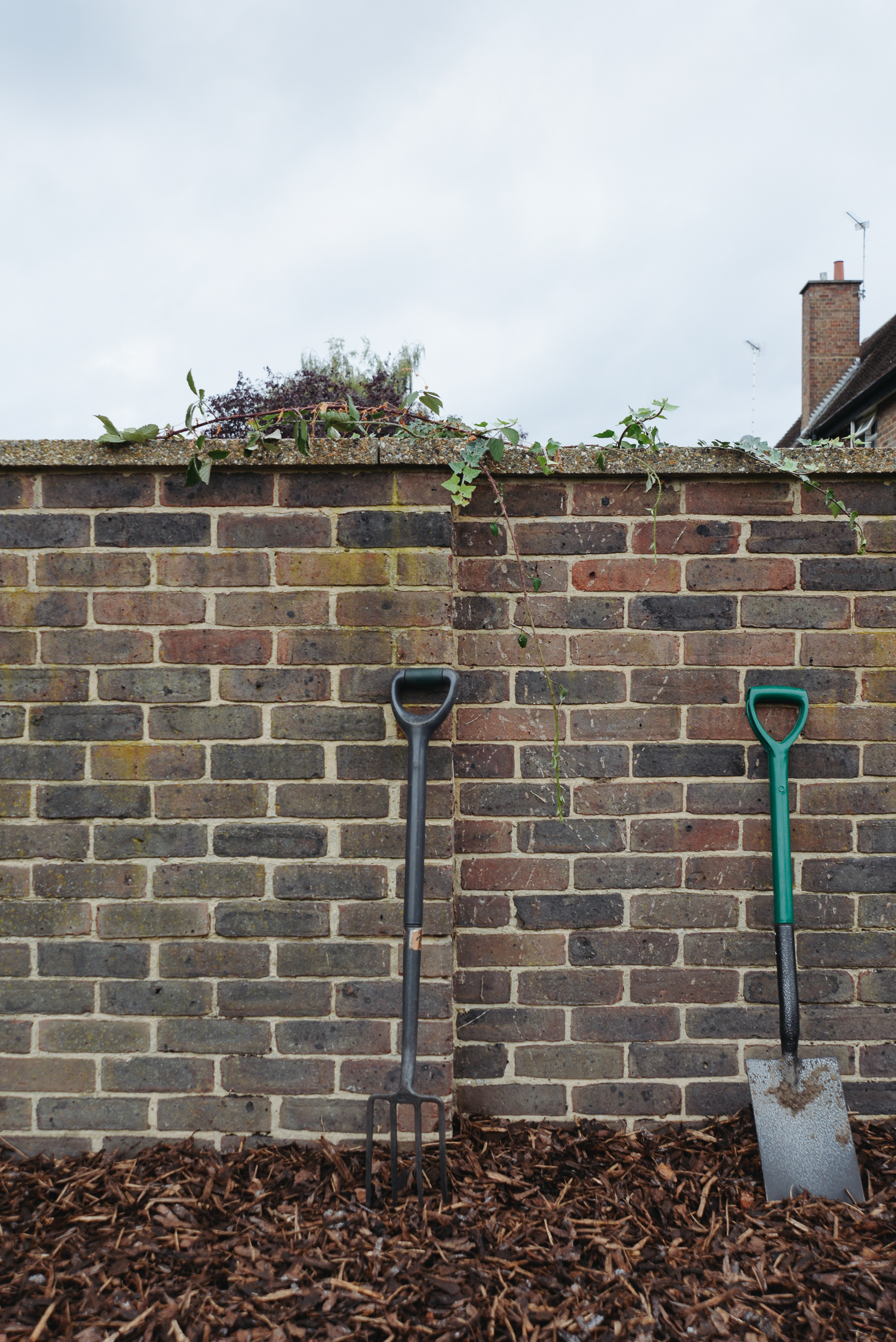
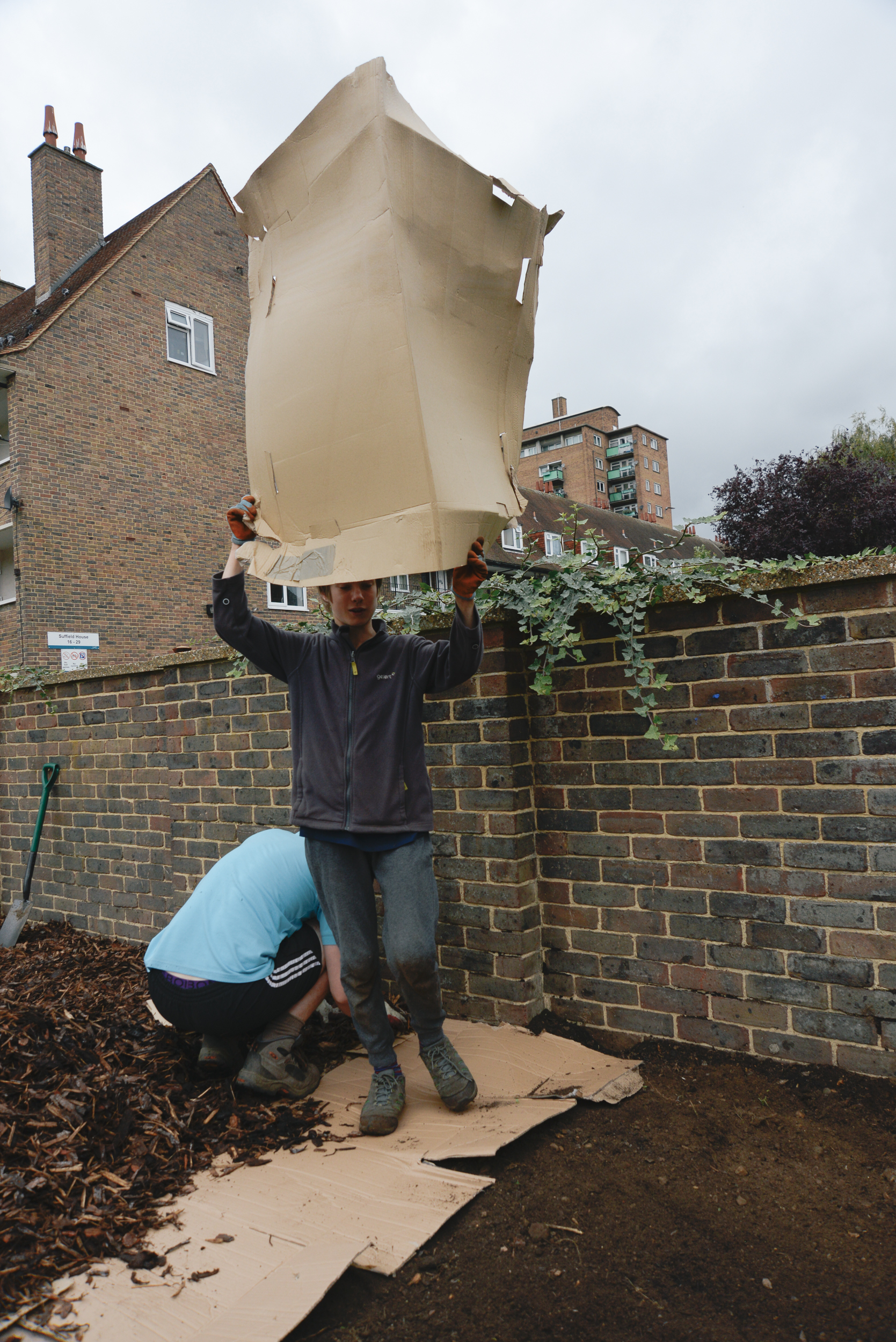

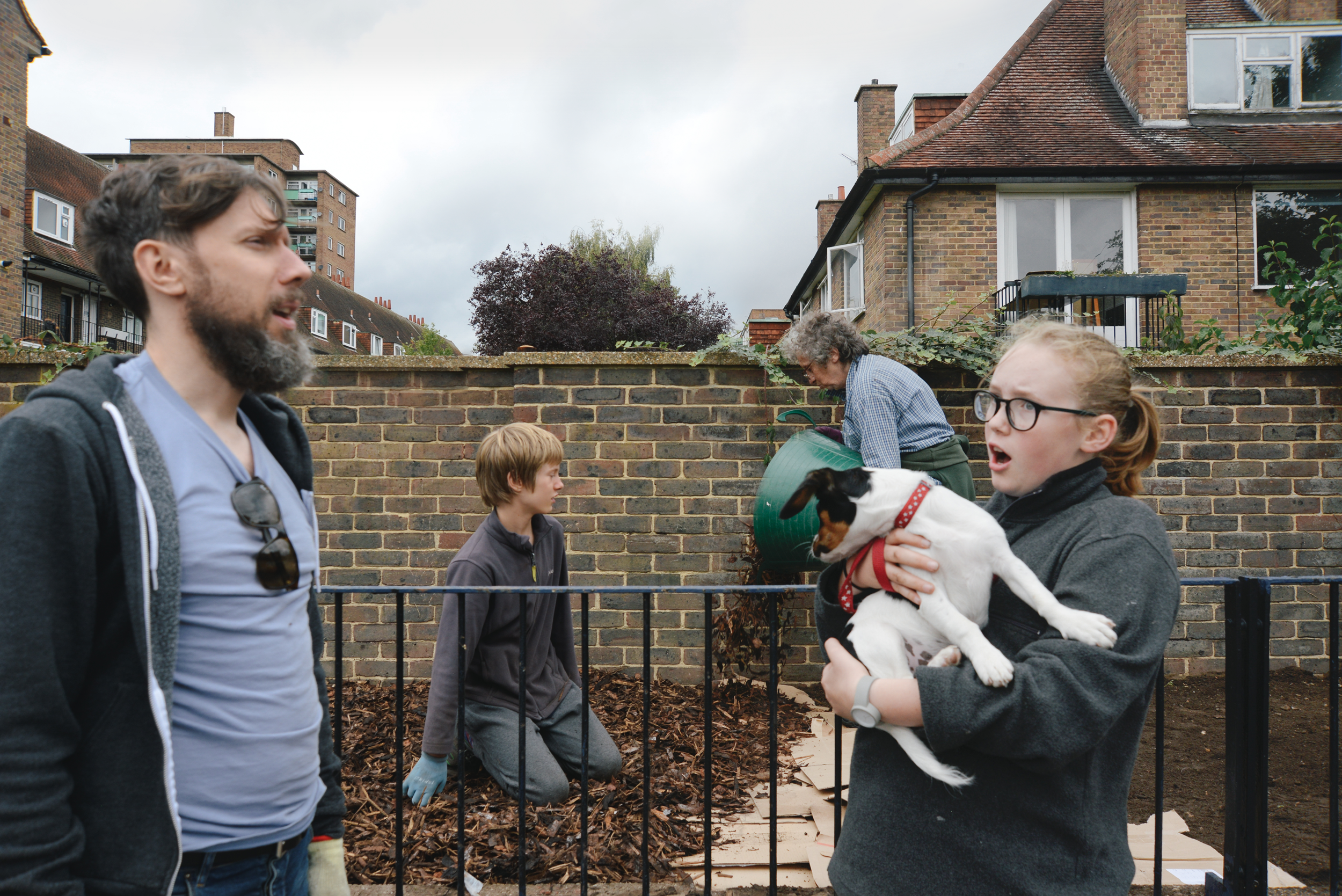
Above Before new trees are planted adding a layer of cardboard below the mulch is a great way of supressing new weed growth.
Right
One of the hazards of planting within the urban environment: Rubble... Lots of it.
Below
A new group of apple trees goes into the ground early 2018.


“Getting roots in the ground feels pretty important to me. I’m not a fan of short term quick-fixes. Planting fruit trees feels different, symbolically as well as practically.”
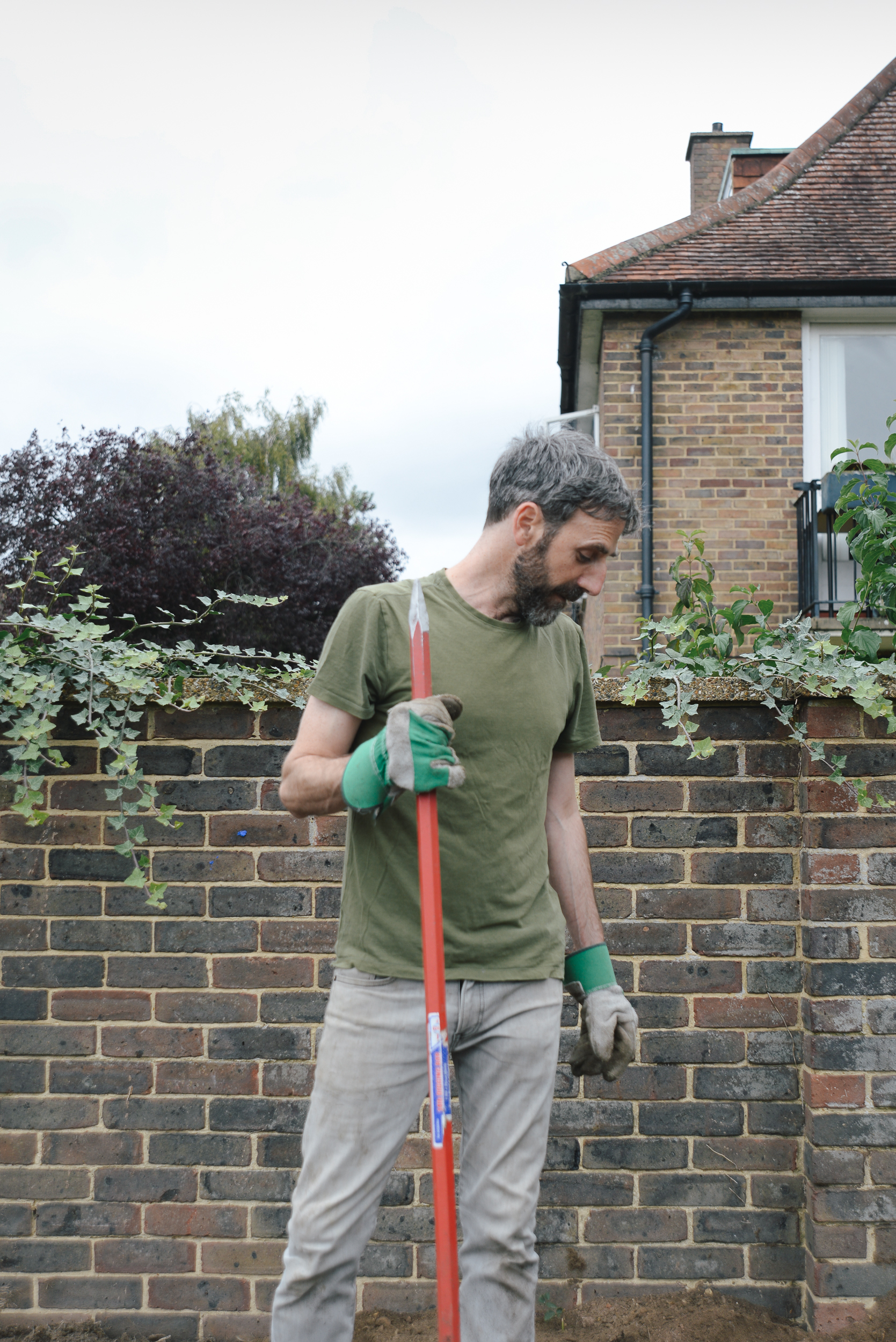
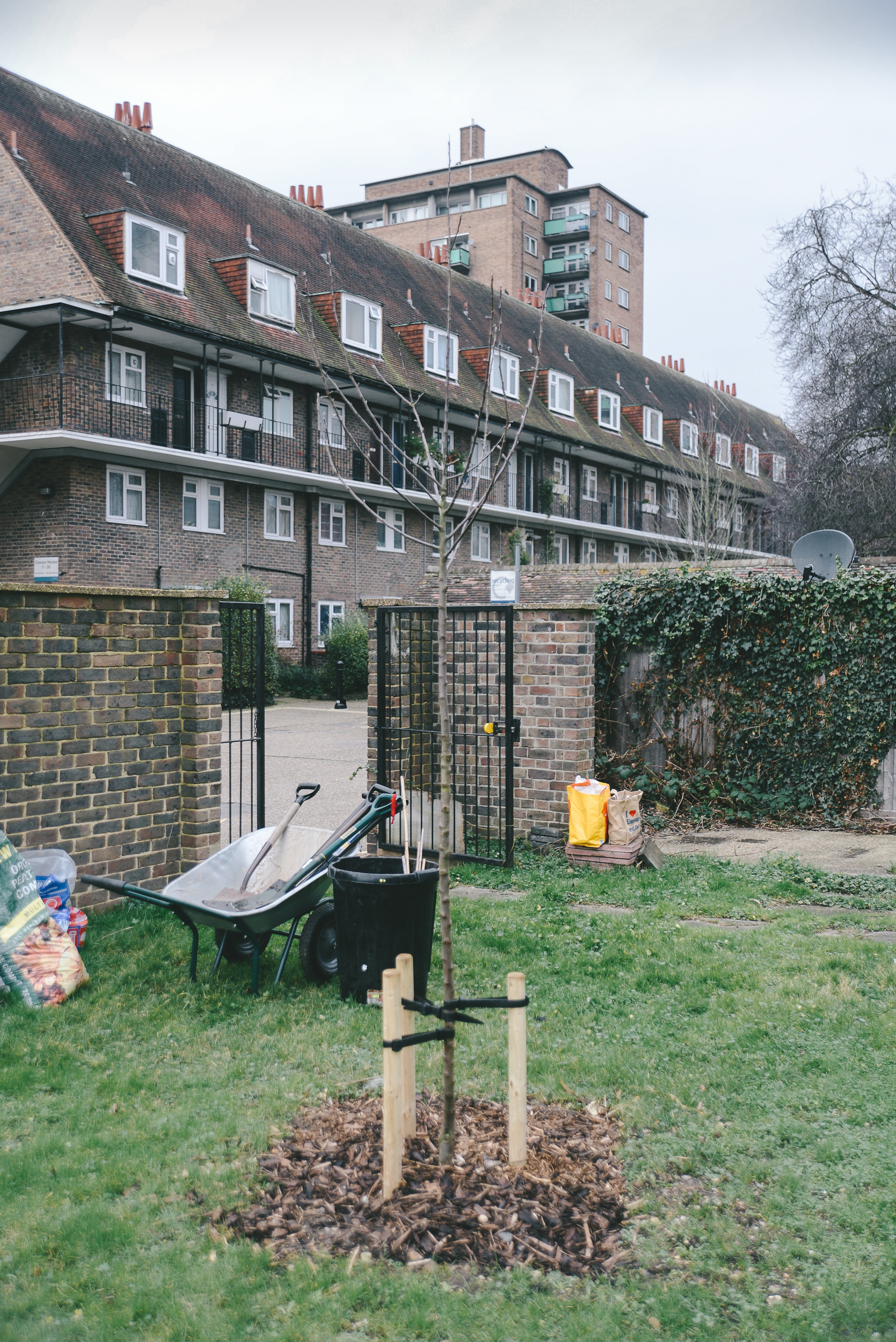
— Share with us something you’ve learned on your journey so far.
“With community projects the journey is more important than the destination. People feeling good about what they have achieved is more important than getting the job finished. Process not product. That comes very hard if you are a finisher and perfectionist.”
— What do you think the future looks like?
“It feels like we are still enjoying gross affluence and privilege beyond what the world’s resources can sustain. And i don’t think a few fruit trees are doing nearly enough to change that. But personally, beyond all rational evidence to the contrary, i’m also instinctively, impossibly optimistic.”
— What do you wish there was more of?
“Planets like earth? If we promise not to fuck the next one up?”
— Any final thoughts?
“Peasgood Nonsuch.“
—